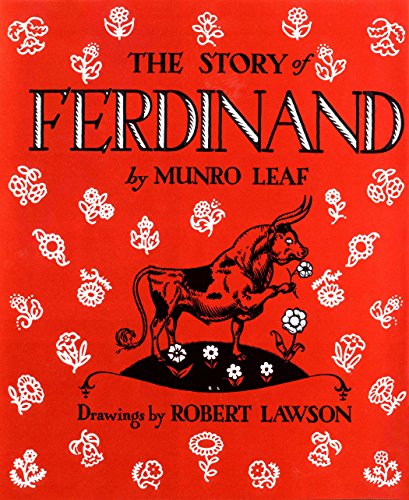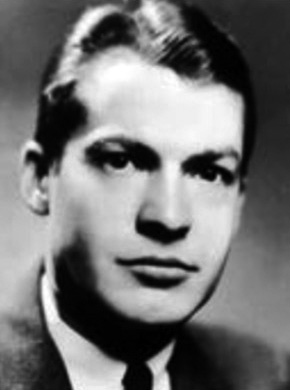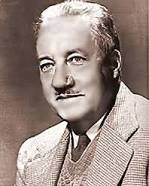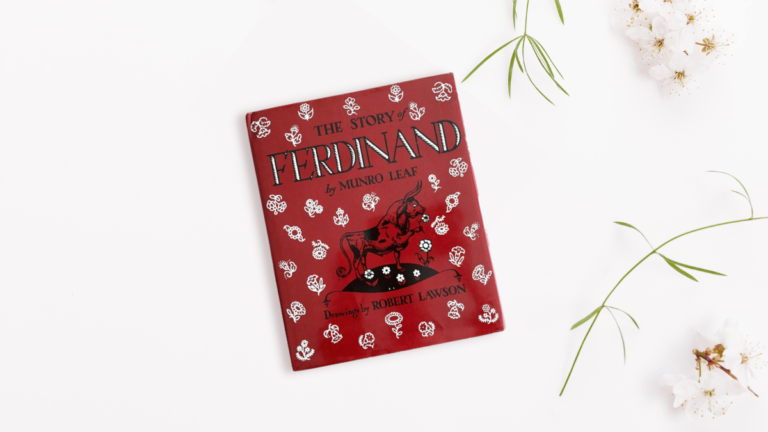Book Review of The Story of Ferdinand
The Children’s Book Review

What to Expect: Being True to Oneself, Peace, and Non-Violence
The Story of Ferdinand is a book everyone wants a “peace” of (pun intended)! It’s a poignant reminder that we can all find peace even amid chaos and conflict. Published in 1936, a time of war, Ferdinand was banned in many countries due to its message of non-violence and peaceful coexistence. But the story’s message was so powerful that it even won the heart of the revered Mahatma Gandhi, who claimed it as his favorite book.
Everyone would assume that all bulls like to have bullfights. Well, not little Ferdinand. Ferdinand would prefer to lay around smelling flowers than butting heads with the other calves. Even when Ferdinand grows into the largest and strongest bull and all the other bulls dream of bullfights in Madrid, he still prefers to smell the flowers.
On the day that five men come to the pasture to select a bull to fight in the bullring in Madrid, Ferdinand accidentally sits on a bee while sniffing flowers and sets off running furiously. The men mistake him for a fierce bull and take him to Madrid to fight a famous matador. Will Ferdinand live up to his new name, Ferdinand the Fierce? Or will he stay true to himself and remain peaceful?
The Story of Ferdinand is such an inspiration because of the way it highlights the importance of staying true to yourself and your beliefs, even when the world tries to pull you in a different direction. The story of Ferdinand is a testament to the power of peace and love, and it reminds us that we have the strength to honor our individuality and pursue a life that brings us true happiness. Let’s embrace the message of Ferdinand and strive to create a world that values peace and non-violence above all else. Ole!
Buy the Book
About the Author
Munro Leaf is best known for the Story of Ferdinand, first published in 1936 and a bestseller ever since. He died in 1976 at the age of 71.

About the Illustrator
Robert Lawson (1892–1957) received his art training at the New York School of Fine and Applied Art. His favorite medium, pen and ink, is used expressively and with detail in his black and white illustrations in The Story of Ferdinand (by Munro Leaf). In addition to illustrating many children’s books, including Mr. Popper’s Penguins, Lawson also wrote and illustrated a number of his own books for children. In 1940, he was awarded the Caldecott Medal for his picture book illustrations in They Were Strong and Good; and in 1944, he was awarded the Newbery Medal for his middle-grade novel Rabbit Hill.

What to Read Next if You Love The Story of Ferdinand
Bianca Schulze reviewed The Story of Ferdinand. Discover more books like The Story of Ferdinand. by reading our reviews and articles tagged with Being True to Oneself.
*Disclosure: Please note that this post may contain affiliate links, rest assured that these will not affect the cost of any products and services promoted here. Our team always provides their authentic opinion in all content published on this site.



